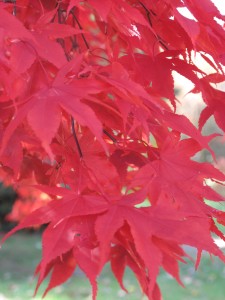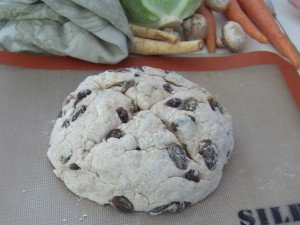The feast that begins Lughnasadh (pronounced loo-NA-sah) is Lammas – the word is an elision of Loaf-Mass – when the first loaves of bread from the first harvest of the new grain are baked, blessed and eaten. Lammas is one of the four fire festivals of the ancient Irish year. It honors the self-sacrifice of the Irish God of the Sun (Lugh) who sends his own life-energy into the grain, dies at the harvest – offering his life for the life of the people – and rises again in the spring when the new crop is planted.
This, perhaps, sounds like other stories you have heard.
Lughnasadh is a season of wisdom, good judgment, responsibility to the common good, and fulfillment, so it is no surprise that mountain tops and wells (heights and depths, the outward and the inward climb-descent) figure prominently in its observance. In Ireland (as religions do everywhere), Christianity appropriated and transformed the native practices; so, the final weekend in July (on the eve of Lughnasadh) is now the famous pilgrimage up Croagh Patrick in honor of the saint. This season is also a time for visiting wells to seek inner healing. Water is essential to our health as humans, allowing us not only to survive, but to thrive.
This season sees the harvest gathered and the fields turned under to lie fallow during the winter months. Tuning our spirits to the seasonal energy, we begin to slow and to move deeper, preparing for the rest and renewal of darkness.
This is the season in which we honor those who have moved beyond personal ego into an inward peace and center, into a concern for the greater good of the community with ‘community’ broadly defined to include all creation. We celebrate all those (past and present) who stand with the voiceless and the oppressed, whose compassion embraces stranger and enemy, who dare to speak truth to power, and whose steady vision encourages us to give our best. Spiritually we enter a time of exploring our ability to take risks on behalf of others, a time of rebalancing our life so that “other” becomes as important as “self”, a time of stepping back with intention and blessing those we have mentored or nurtured as they take the lead and set the direction.
As I do at the beginning of every season, I invite you to refresh (or create) a personal meditation or shrine space somewhere in your home. Make it a place of beauty with a potted herb (sage is particularly associated with this season), photos of wise elders – human or otherwise, and candles. You may want to use the colors of harvest or autumn trees.
Take time to reflect on the harvest of your own life and to begin to draw up your spiritual legacy: what are the qualities of soul, mind, heart, and spirit that you wish to leave to future generations? In your journal, list two or three concrete ways to manifest each of these qualities here and now.
At least once a week during this season, light the candles and take some time to commit yourself to visibly and tangibly embodying a deeper maturity – whether that involves reconciliation with a family member or friend or enemy, witness against a current injustice, greater generosity with the harvest of your labor through charitable giving, taking a workshop in conflict resolution or peace-making or non-violent communication, or (perhaps) moving more fully into sustainable living and away from consumerism.
If the following prayer inspires you, use it to conclude each meditation time.
 I call upon the nine gifts of autumn
I call upon the nine gifts of autumn
to gather me into this day:
balance of equinox,
relinquishment of control,
release of self,
trust of emptying,
compassion of generosity,
enfolding of peace,
promise of seed,
strength of roots,
renewal of darkness.
Nine gifts to encompass me
as I am nourished into maturity.
May your Lughnasadh be especially fruitful this year!
–Andrea
Text © 2014, Andrea La Sonde Anastos
Photos © 2008, Immram Chara, LLC
Note: Last Thursday, August 1, the seasons switched on the website and in the Etsy shop (from Beltane to Lughnasadh). New pictures went up in the home slider and blog slider, three new sets of cards (and prints from those photos) are available, and two new pieces of art – as well as new art in the Archives – are featured. If you haven’t had a chance to do so yet, click the link(s) and check them out.
